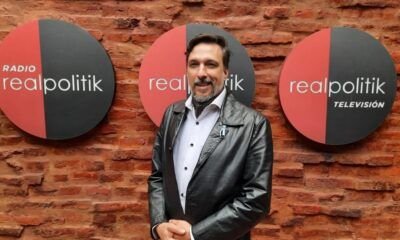INTERNACIONAL
De la Capilla Sixtina a la Sala de las lágrimas: los lugares secretos del cónclave que marcarán la elección del futuro Papa

El cónclave que elegirá al sucesor del papa Francisco se desarrolla en algunos de los lugares más significativos del Vaticano, cada uno de ellos con una carga histórica y simbólica que resalta la solemnidad y el carácter divino del proceso.
Estos espacios han sido escenario de papados durante siglos y sirven de marco a un evento que atrae la atención de millones de católicos alrededor del mundo.
El cónclave inicia en este imponente templo, que no solo es el centro religioso del catolicismo, sino también uno de los lugares más emblemáticos de la historia de la Iglesia. Bajo las decoraciones doradas y los mármoles preciosos de la basílica, los cardenales se reúnen para celebrar una misa que marca el comienzo del proceso de elección del nuevo papa.

Después de esta ceremonia, los cardenales se trasladan en procesión hacia la Capilla Sixtina, cantando el himno “Veni Creator”. La Basílica de San Pedro, construida entre 1506 y 1626 y diseñada por grandes maestros como Bramante, Miguel Ángel y Bernini, también será el lugar donde el nuevo papa será proclamado públicamente al decirse las palabras “Habemus Papam” desde el balcón de la logia.
La Capilla Sixtina, construida entre 1477 y 1480, es uno de los lugares más reconocibles del Vaticano y un escenario clave durante el cónclave. Los cardenales se sientan en sillas de madera de cerezo, frente a mesas cubiertas con manteles de tonos beige y granate, para realizar las votaciones. La Capilla Sixtina no solo es conocida por sus impresionantes frescos de artistas como Perugino y Botticelli, sino sobre todo por la obra maestra de Miguel Ángel, su famosa bóveda y el Juicio Final.

La capilla también alberga el proceso secreto de votación, con dos estufas en las que se queman las papeletas de voto. En una de ellas, el humo negro indica que no se ha llegado a acuerdo, y el humo blanco señala que se ha elegido al nuevo papa.
Tras ser elegido, el nuevo papa se dirige a la Sala de las lágrimas, una pequeña habitación ubicada al fondo de la Capilla Sixtina. Este espacio, de solo 9 metros cuadrados, es donde, según la tradición, el papa elegido rompe en llanto ante la magnitud de la responsabilidad que asumirá. Además, es en esta sala donde el nuevo papa viste por primera vez la sotana blanca que lo identificará durante su pontificado.

Antes de su primera aparición pública desde el balcón de la Basílica de San Pedro, el nuevo papa se dirige a la Capilla Paulina, ubicada cerca de la Capilla Sixtina. En este espacio, el papa se detiene para realizar una breve oración personal, un momento de recogimiento ante el Santo Sacramento. La capilla fue construida en 1537 por el arquitecto Antonio da Sangallo a petición de Papa Pablo III, y se ha convertido en un lugar de reflexión para el papa elegido antes de asumir su nueva misión.
Durante el cónclave, los cardenales se alojan en la Residencia de Santa Marta, un moderno edificio que se encuentra detrás de la Basílica de San Pedro. Esta residencia fue construida bajo el pontificado de Juan Pablo II y reemplazó a las antiguas habitaciones improvisadas del Palacio Apostólico. Aquí, cada cardenal tiene una habitación individual y acceso a servicios de alta calidad, incluyendo comidas y lavandería. La residencia está equipada con una capilla y está ubicada a tan solo 500 metros de la Capilla Sixtina, lo que facilita el traslado diario para las votaciones.

Un aspecto crucial del cónclave es el compromiso de los cardenales y todo el personal involucrado de mantener el secreto absoluto sobre lo que ocurre durante el proceso de elección. Los cardenales deben jurar guardar silencio, bajo pena de excomunión.
Además, el Vaticano ha implementado estrictas restricciones de comunicación, como el bloqueo del uso de teléfonos móviles y otros dispositivos electrónicos en los lugares clave, y la interrupción de la circulación de vehículos y peatones para evitar cualquier contacto con el exterior durante el traslado entre la residencia de Santa Marta y la Capilla Sixtina.
Estos lugares del cónclave, con su carga simbólica y solemne tradición, son testigos de uno de los procesos más significativos para la Iglesia Católica. Cada rincón de estos espacios históricos no solo marca el camino hacia la elección del nuevo papa, sino que también refleja la profunda espiritualidad y el respeto por la historia que caracteriza a la Santa Sede.
(Con información de AFP)
art gallery,eidon,museum,nev
INTERNACIONAL
US strikes on Yemen continue after Houthi missile hits by Israeli airport; terror group vows ‘aerial blockade’

The U.S. has reportedly launched a new round of airstrikes in Yemen after the Iran-backed Houthis claimed responsibility for a missile that landed near Israel’s main airport on Sunday.
The Houthi-controlled state news agency in Yemen reported that «American aggression» was behind several strikes on the capital, Sanaa, on Monday. At least 16 people were wounded, according to New Arab.
Since March 15, U.S. Central Command (USCENTCOM) «has conducted an intense and sustained campaign targeting the Houthi terrorist organization in Yemen to restore freedom of navigation and American deterrence,» a U.S. Defense official told Fox News Digital on Monday. «We will continue to increase the pressure and further disintegrate Houthi capabilities as long as they continue to impede freedom of navigation.»
Earlier Monday, Yemen’s Houthis vowed to continue attacks on Israeli airports after the missile briefly halted flights and commuter traffic at Israel’s main international airport near Tel Aviv. The Houthis issued a warning to airlines that they would carry out «repeated targeting» of Ben Gurion Airport, Israel’s main gateway to the world.
The Houthis had already threatened late Sunday to implement «a comprehensive aerial blockade» on Israel as Prime Minister Benjamin Netanyahu’s Cabinet was set to vote to expand fighting in Gaza.
ISRAEL APPROVES PLAN TO CAPTURE ALL OF GAZA, CALLS UP TENS OF THOUSANDS OF RESERVE TROOPS: REPORT
Displaced Yemenis load bags of food and supplies on their motorcycle in the western province of Hodeida on May 4, 2025. (KHALED ZIAD/AFP via Getty Images)
Netanyahu said the U.S. was supporting Israeli operations against the Houthis. In a later statement, he added Israel would respond to the Houthis «AND, at a time and place of our choosing, to their Iranian terror masters.»
The U.S. military under President Donald Trump has been carrying out an intensified campaign of daily airstrikes targeting the Houthis since March 15.
USCENTCOM said in its most recent statement on April 27 that its forces have «conducted an intense and sustained campaign targeting the Houthi terrorist organization in Yemen to restore freedom of navigation and American deterrence» since March 15. «These operations have been executed using detailed and comprehensive intelligence ensuring lethal effects against the Houthis while minimizing risk to civilians,» USCENTCOM said.
USCENTCOM said the strikes «have destroyed multiple command-and-control facilities, air defense systems, advanced weapons manufacturing facilities, and advanced weapons storage locations.»
«While the Houthis have continued to attack our vessels, our operations have degraded the pace and effectiveness of their attacks. Ballistic missile launches have dropped by 69%. Additionally, attacks from one way attack drones have decreased by 55%,» USCENTCOM added. «U.S. strikes destroyed the ability of Ras Isa Port to accept fuel which will begin to impact Houthi ability to not only conduct operations, but also to generate millions of dollars in revenue for their terror activities.»
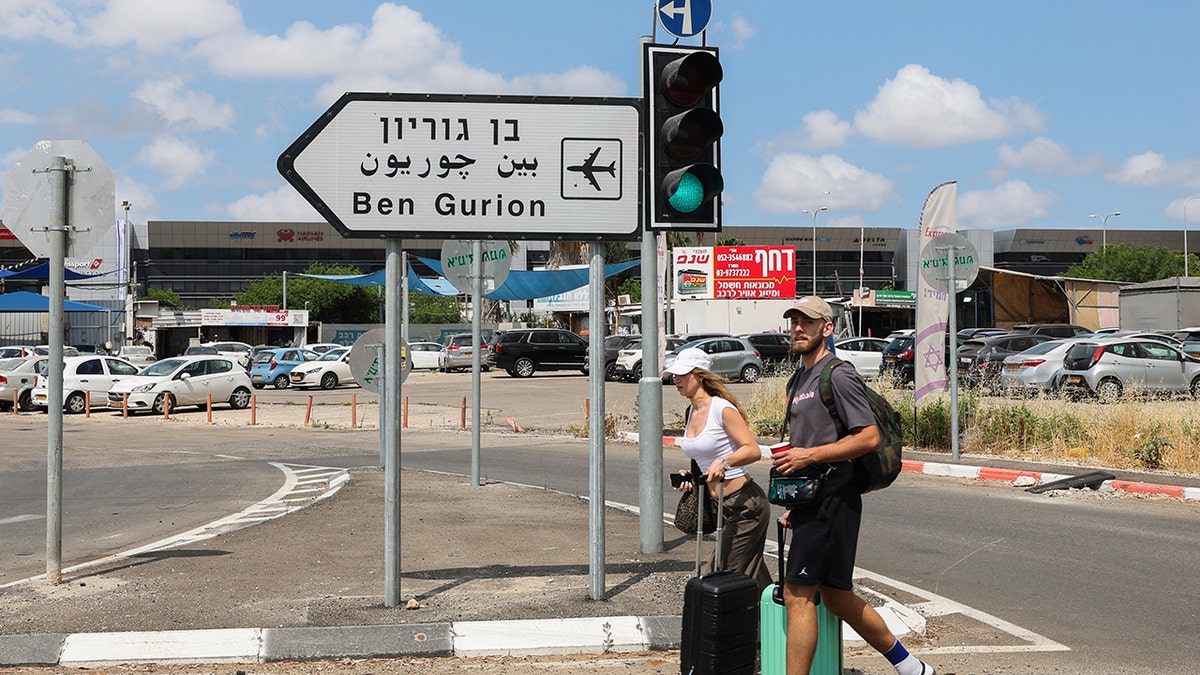
Travelers walk toward Ben Gurion Airport after main road entrances to the facility were closed by Israeli police in response to a missile launched from Yemen on May 4, 2025. (JACK GUEZ/AFP via Getty Images)
HOUTHI MISSILE STRIKES NEAR ISRAELI AIRPORT AFTER EVADING MISSILE DEFENSES
«Iran undoubtedly continues to provide support to the Houthis. The Houthis can only continue to attack our forces with the backing of the Iranian regime,» USCENTCOM said. «We will continue to ratchet up the pressure until the objective is met, which remains the restoration of freedom of navigation and American deterrence in the region.»
The Houthis have been firing at Israel since the war against Hamas in Gaza began after the Oct. 7, 2023, terrorist attacks, raising their profile as the last member of Iran’s self-described «Axis of Resistance» capable of launching regular attacks on Israel.
Their missiles have mostly been intercepted, although some have penetrated Israel’s missile defense systems, causing damage.
The Israeli military said Sunday was the first time a missile struck the airport grounds since the Israel-Hamas war began. Initial findings indicated the likely cause was a technical issue with the interceptor, they said.
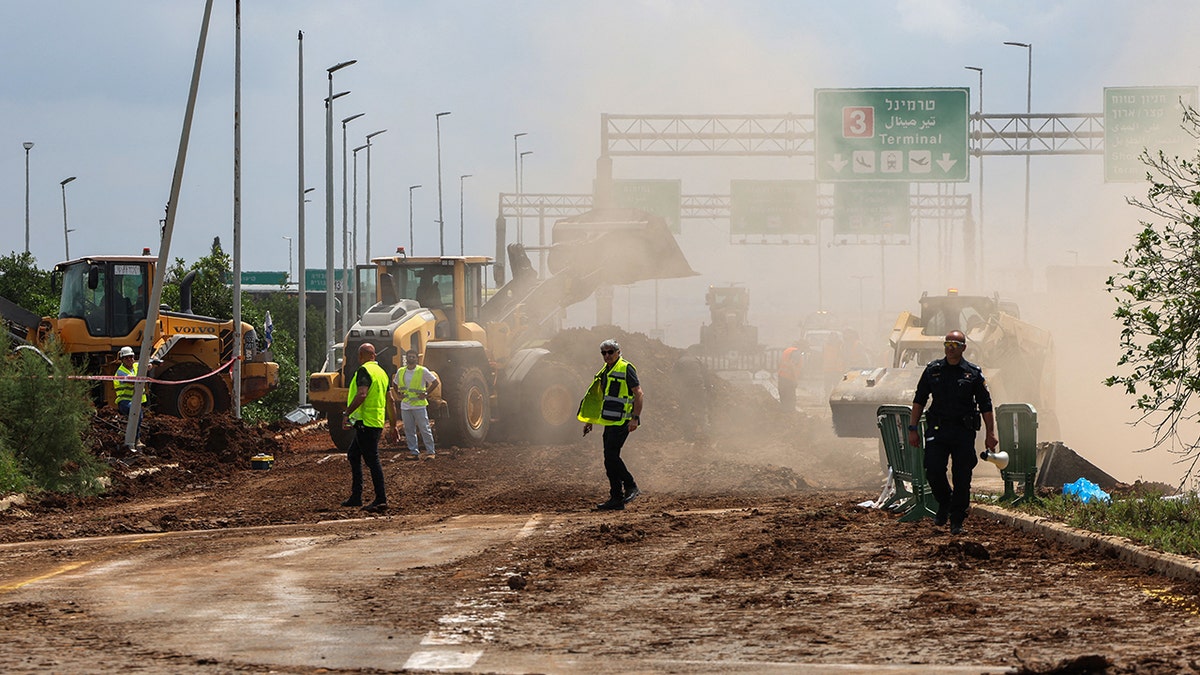
Israeli emergency services clear a road outside Ben Gurion Airport after a missile launched from Yemen struck near the facility on May 4, 2025. (JACK GUEZ/AFP via Getty Images)
Israel’s emergency medical service Magen David Adom said four people were lightly wounded in the blast. Another two people were reportedly hurt while on their way to shelter, the BBC reported.
CLICK HERE TO GET THE FOX NEWS APP
Multiple international airlines canceled or postponed flights. The war with Hamas in Gaza and then Hezbollah in Lebanon led a wave of airlines to suspend flights to Israel, but many have resumed in recent months.
The Associated Press contributed to this report.
INTERNACIONAL
A una semana del apagón histórico en España: qué se sabe y por qué se vivió otro lunes negro
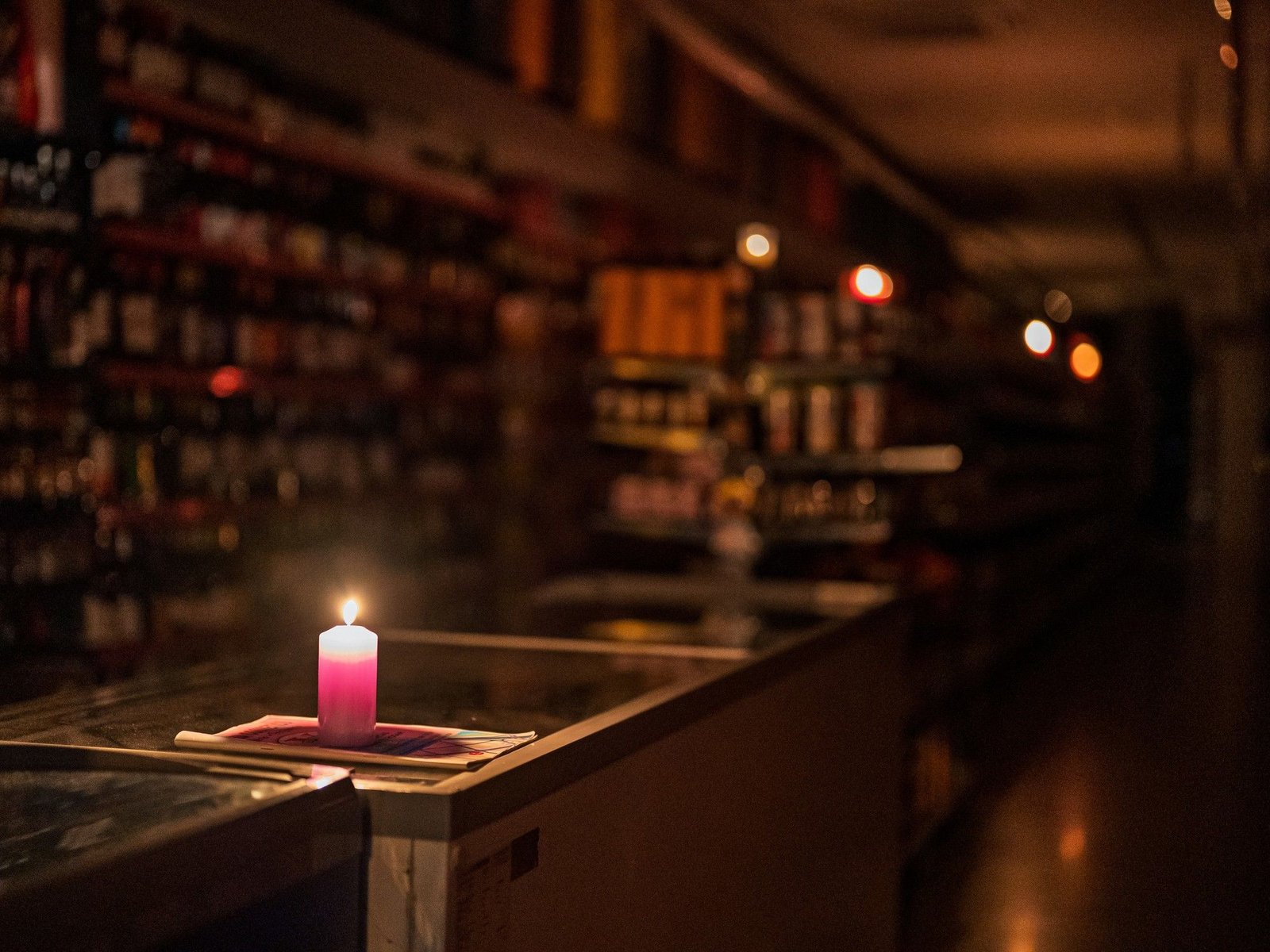
Interconexión insuficiente
¿Cuánto se puede almacenar?
Energía nuclear versus la renovable
Otro lunes negro
INTERNACIONAL
White House says ‘no final decisions’ made on foreign moviemaking tariffs as Trump weighs ‘national security’

The White House said Monday «no final decisions» have been made regarding the Trump administration’s planned tariffs on foreign moviemaking, as one expert welcomed the potential action as a reprieve for the American film industry.
«Although no final decisions on foreign film tariffs have been made, the Administration is exploring all options to deliver on President Trump’s directive to safeguard our country’s national and economic security while Making Hollywood Great Again,» White House spokesperson Kush Desai said in a statement to Fox News Digital.
President Donald Trump first announced in a Truth Social post on Sunday that he was authorizing the Department of Commerce and the U.S. trade representative «to immediately begin the process of instituting a 100% Tariff on any and all Movies coming into our Country that are produced in Foreign Lands.» Commerce Secretary Howard Lutnick responded on X, «We’re on it.»
ACTORS GO BEHIND-THE-SCENES ON HOW TRUMP IS MAKING HOLLYWOOD GREAT AGAIN
«The elite in Hollywood will largely hate this because they’ve sold out their workers in favor of maximum profits while shooting in insanely cheap labor environments,» Robby Starbuck, a former Hollywood producer and conservative activist, told Fox News Digital. «American workers who are referred to as ‘below the line’ in filmmaking are over the moon about getting more jobs back here and rental houses couldn’t be happier.»
«Overall, while there will be short-term pain for studios, in the long run this will strengthen the American film business,» Starbuck said. «Also, communist China’s propaganda efforts take a major hit with this move.»
On-location production in the greater Los Angeles area dropped by 22.4% in the first quarter of 2025 compared to the same time last year, according to FilmLA, a nonprofit that organizes film permits for the city and county.
One movie producer told the New York Times last month that the Hollywood film industry is undergoing an «existential crisis,» as the newspaper noted that reality shows, indie films and even blockbuster films are increasingly making business decisions to film overseas to the detriment of the middle-class workers in the Los Angeles-area, such as camera operators, set decorators and lighting technicians.
The newspaper noted that despite Hollywood’s many available studios, the game show «The Floor» chose to fly host Rob Lowe and 100 American contestants to Dublin, Ireland, rather than shoot the show domestically.
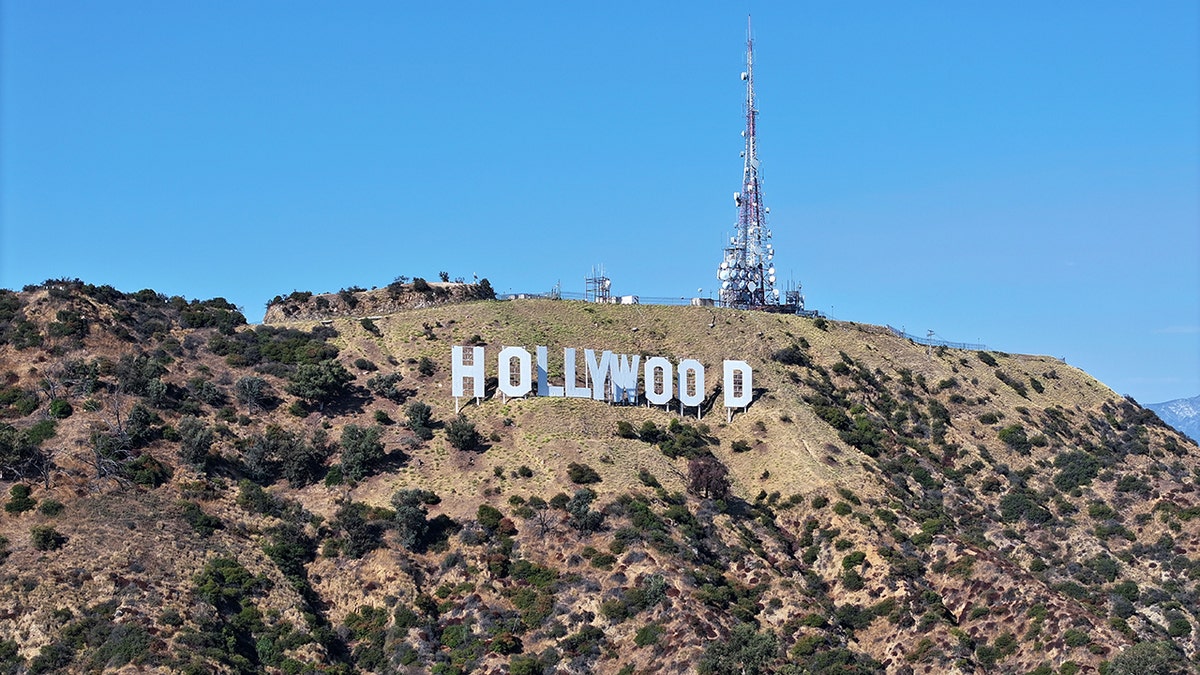
TRUMP ANNOUNCES 100% TARIFF ON ALL FOREIGN-PRODUCED MOVIES: ‘WE WANT MOVIES MADE IN AMERICA, AGAIN!’
The BBC reported that several recent major films produced by U.S. studios were recorded overseas, including «Deadpool & Wolverine,» «Wicked» and «Gladiator II.» «Mission Impossible» also was shot outside the United States.
In his Truth Social post, Trump said the movie industry in America is «DYING a very fast death,» arguing that other countries «are offering all sorts of incentives to draw our filmmakers and studios away from the United States.»
«This is a concerted effort by other Nations and, therefore, a National Security threat. It is, in addition to everything else, messaging and propaganda!» Trump wrote. «WE WANT MOVIES MADE IN AMERICA, AGAIN!»
Trump told reporters Sunday that other countries have been «stealing» the moviemaking capabilities from the United States, saying that he had done «some very strong research over the last week.»
The president said the U.S. is «making very few movies now» and that Hollywood is «being destroyed.»
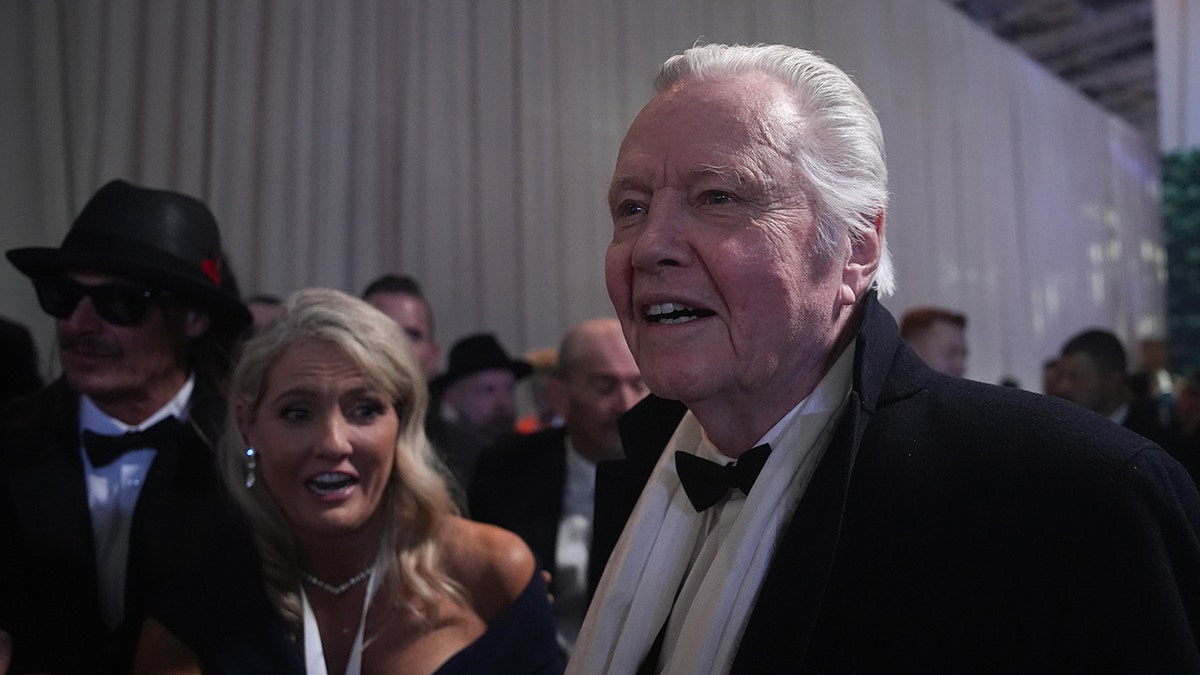
Actor Jon Voight (Andrew Harnik/Getty Images)
«You have an incompetent, grossly incompetent governor that allowed that to happen, so I’m not just blaming other nations,» Trump said, making a dig at Democrat California Gov. Gavin Newsom.
«But other nations have stolen our movie industry. They’re not willing to make a movie inside the United States and we should have a tariff on movies that come in,» Trump added. «Governments are actually giving big money. I mean they’re supporting them financially, so that’s sort of a threat to our country in a sense. And it’s been a very popular thing.… Moviemakers love it.»
In January, Trump appointed stars Jon Voight, Mel Gibson and Sylvester Stallone as «special ambassadors» to Hollywood.
CLICK HERE TO GET THE FOX NEWS APP
Voight – who is Angelina Jolie’s father – reportedly has recently been meeting with movie executives and union representatives in Los Angeles while crafting a plan to revive the American moviemaking industry, Deadline reported.
Trump’s Hollywood ambassador has met with the Directors Guild of America, Teamsters and the International Alliance of Theatrical Stage Employees so far, sources told the outlet.
Movies,Entertainment,Los Angeles,Donald Trump,California
-

 POLITICA3 días ago
POLITICA3 días agoEl peronismo consiguió los votos para avanzar con la reelección indefinida de legisladores bonaerenses
-

 POLITICA6 horas ago
POLITICA6 horas agoAntes del juicio oral, confirman una prueba demoledora contra Cristina y Máximo Kirchner en un caso por lavado
-

 SOCIEDAD2 días ago
SOCIEDAD2 días agoCuándo es el paro de colectivos de mayo y a qué líneas afecta

















